Making roses - or even full bouquets - from fallen leaves is a fun fall craft. Here is how I make Maple Leaf Roses. Great for fall weddings or Thanksgiving decor, too!
Originally published October 18, 2016, Updated on 11/8/20

Anyway, back in 2016, we had gone up the shore to Duluth, MN to enjoy the fall colours, the previous weekend.
We managed to not take any photos of anything, somehow... but we DID collect some leaves.
I’d been wanting to make some Maple Leaf Roses for the blog for ages, and finally had some time to. October is usually my busiest time of year, but an elbow injury had been preventing me from sewing... freeing up some time!
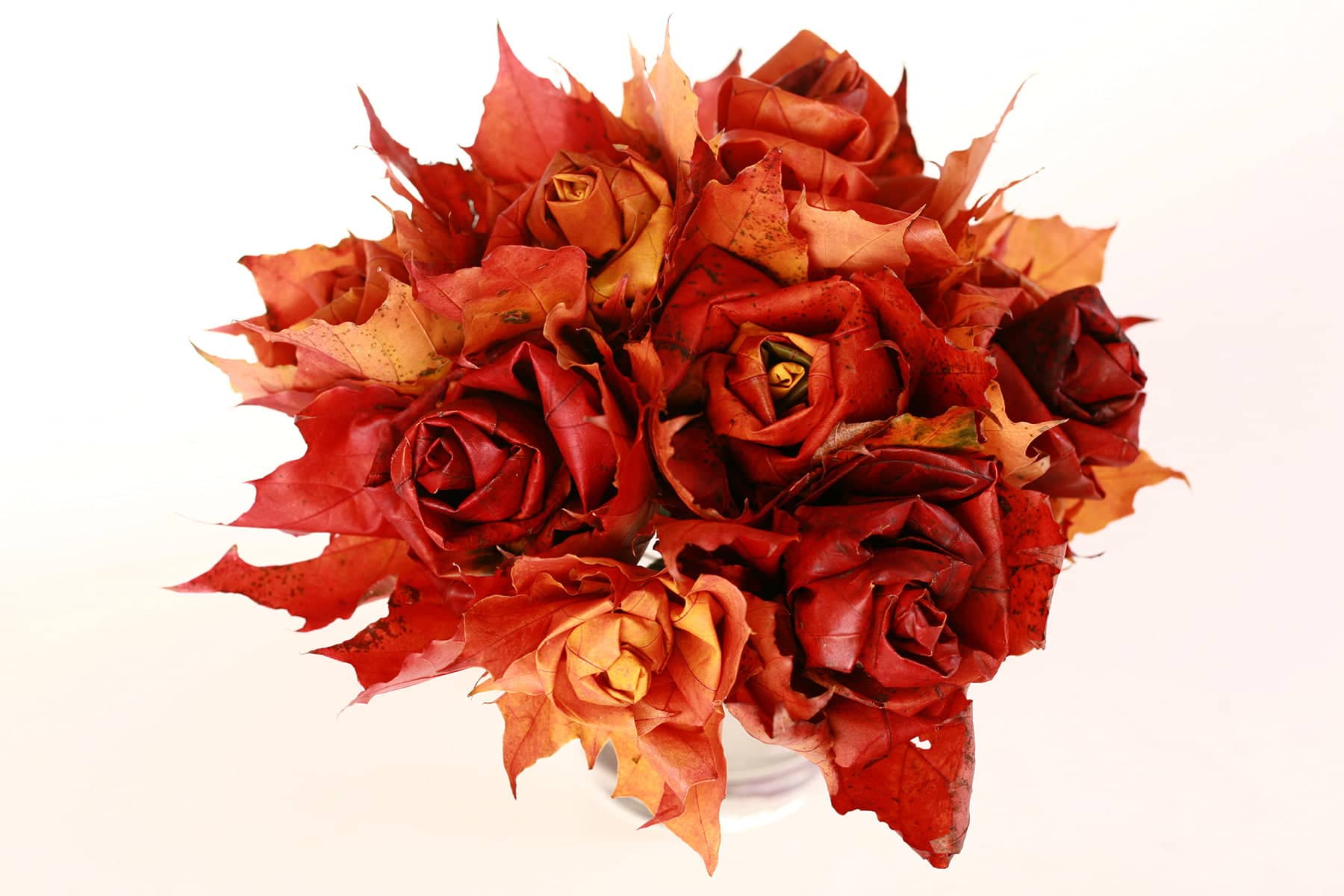
Making Roses Out of... Whatever
You see, I’ve made roses out of pretty much whatever... for as long as I can remember.
When I was in elementary school, I’d make them out of (unchewed!!) gum.
When I got a bit older, that practice helped me when it came to making them out of fondant or gum paste, as part of my cake decorating career.
All the while, I’d still play with food to make roses, especially when bored. Tootsie rolls (especially the fruity ones!), any kind of taffy, Kraft Caramels... whatever.
If it had a texture in that neighbourhood, I’d make roses from it.

Making Roses out of Maple Leaves
I don’t remember when I first started making roses from maple leaves, but it’s a fun, seasonal thing to do.
Not only does it give you an excuse to wander around outside, enjoying some fresh air and all the colours and smells of autumn, if just feels nice to work with natural materials sometimes.
I guess I just enjoy the sensory experience of manipulating these fallen leaves into roses. It also feels sort of rewarding to transform a pile of leaves into a beautiful bouquet!
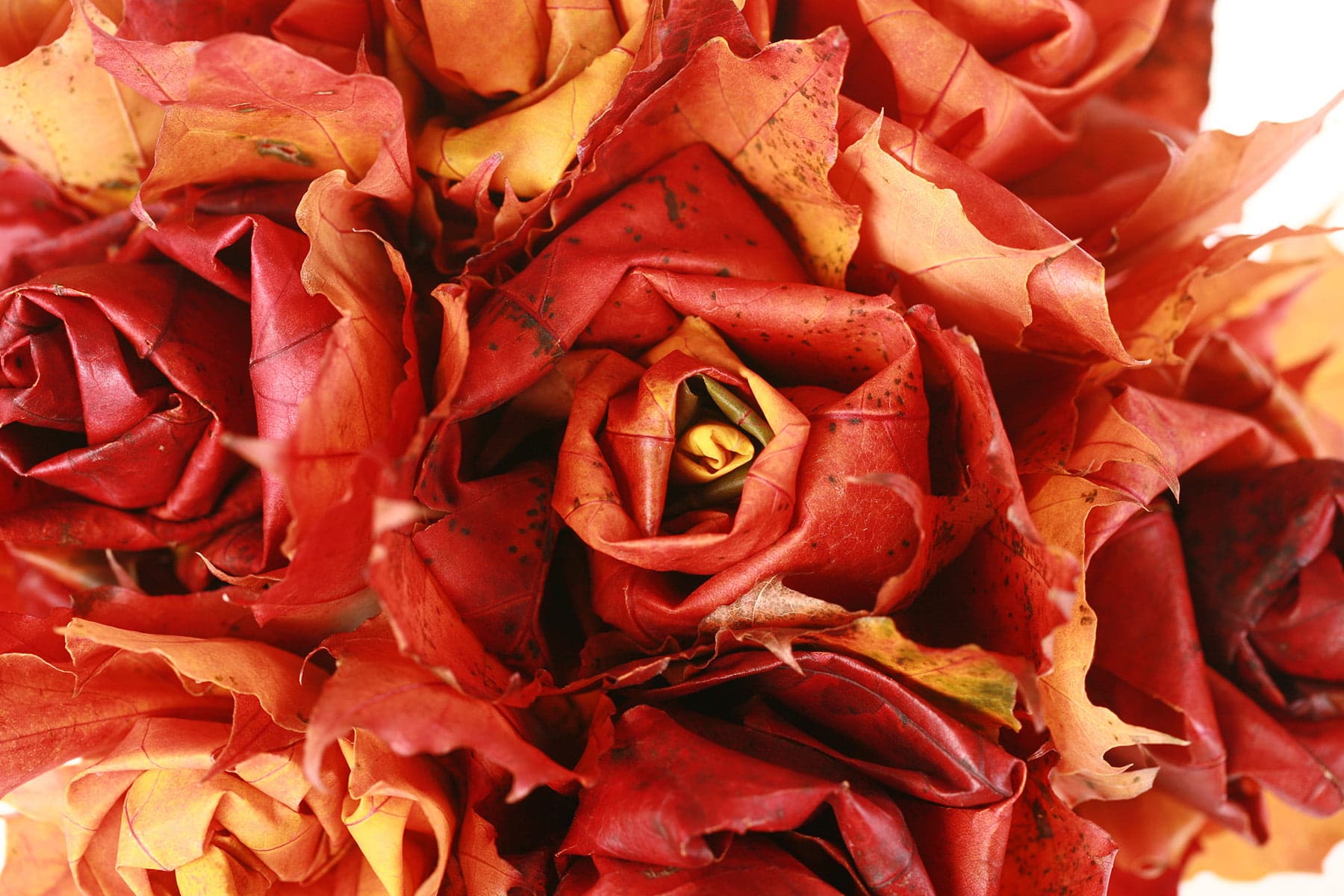
The Maple Leaves
Gathering the Leaves
You’ll want to use very freshly fallen leaves for these roses - as soon as the leaves fall from the tree, they start drying out, losing colour, etc.
So, not only are old leaves not as bright, they’re also far more brittle. For the bending, wrapping, and other manipulation that the leaves go through in the course of becoming roses, you’ll need leaves that won’t just shatter.
The morning after a rainy day tends to be the best for gathering the leaves, in my experience.
Wind and rain the day or night before takes the leaves off the tree, the moisture in the air keeps the leaves fresh overnight, and you pick them up before the sun has a chance to dry them out.
I like to pick out leaves that feel sort of leathery, in a wide variety of colours and sizes. I avoid any with big holes, but little blemishes give the flowers a bit of character.
Gather more leaves than you think you’ll need!

Care of the Maple Leaves
You’ll want to make the roses as soon as possible after gathering them. Until you do, be sure to keep the leaves moist.
If they were dewy when you got them, you can put them in a plastic bag for a few hours.
If not, place them in a plastic bag, mist them down with water, and then close the bag to keep the moisture in.
Before making the roses, carefully cut off all of the stems.

Uses for Maple Leaf Roses
Home Decor
I love how Maple leaf roses look - a gorgeous bit of fall colours right in my living room!
They ARE very fragile, though. I don’t necessarily recommend displaying them on a coffee table in a house with cats, small children, etc!

Thanksgiving Centerpieces
These roses are gorgeous as their own bouquet centerpieces - as shown - or incorporated into other seasonal decor.
Add them in with other flowers, leaves, cornucopia type displays, in amongst mini pumpkins or squashes, etc.
Just be sure to make them soon before use, and keep them moist before adding them to your decor. Dry leaves are extremely fragile leaves, after all!

Fall Wedding Floral Design
These maple leaf roses can make gorgeous - of time sensitive - wedding florals.
Bouquets can be made by gathering the stems, wrapping the stems together with more floral tape, and decorating with matching ribbon.
Centerpieces can be made the same as for Thanksgiving centerpieces.
Personal wedding florals - boutonnierres, corsages, etc - can be made much the same way that real, wired roses are.
Just be sure to make them as close to “go time” as possible, and keep them moist while you wait.
Bouquets, arrangements, and personal flowers can be misted with water, covered loosely with plastic bags, and kept in fridges / cool garage / floral coolers / etc.
While centerpieces and other such arrangements are good to go once set in place, personal flowers and bouquets are subject to more stresses, throughout the day.
It’s a good idea to mist them every once in a while, and just expect that by the end of the night... they won’t be looking quite as great!
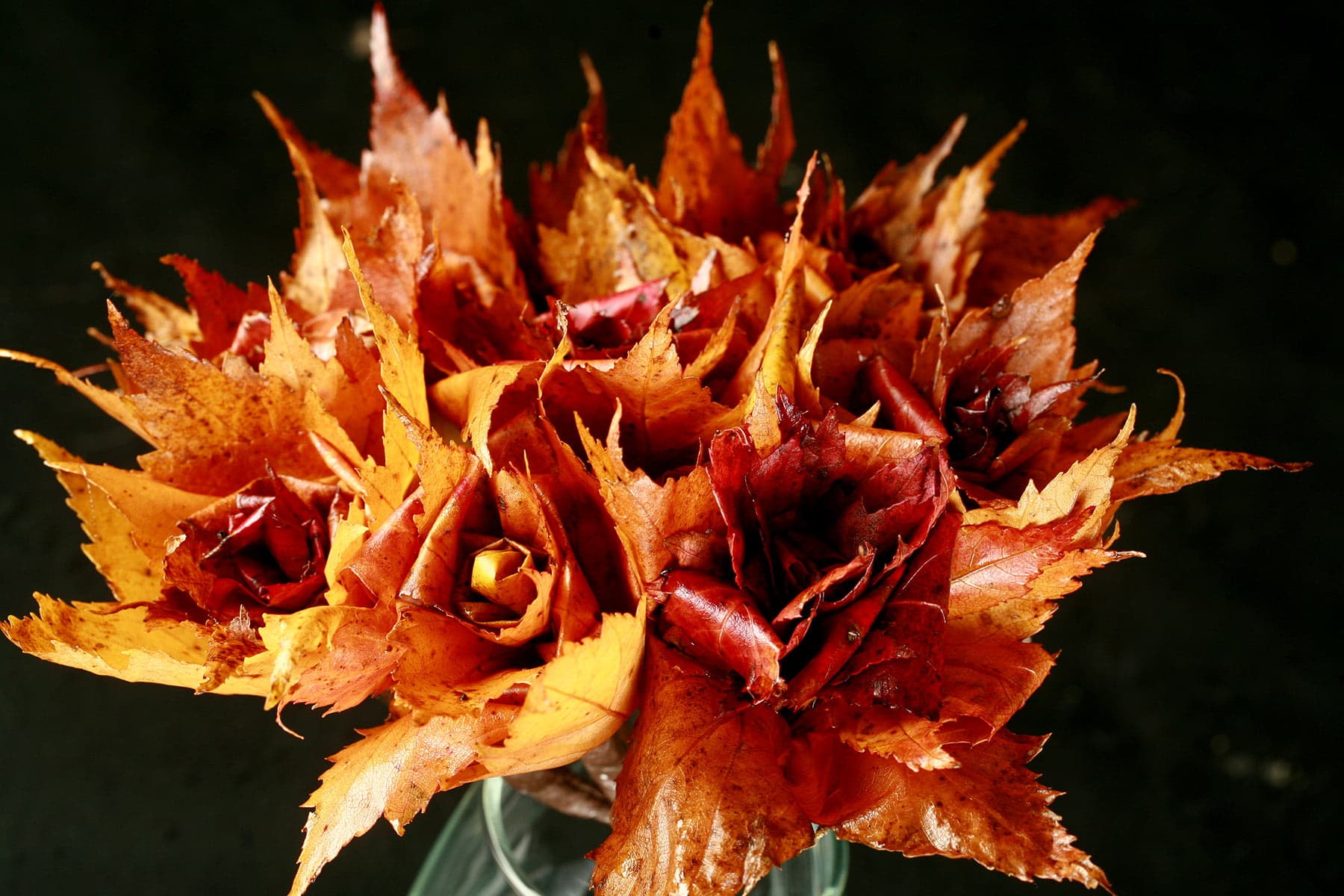
Share the Love!
What do you guys think? Any plans to make a set yourself?
Be sure to take some pics of your handiwork! If you post it to Bluesky, be sure to tag us - @CelebrationGen. We're also on Pinterest, so you can save all your favourite recipes to a board!
Also, be sure to subscribe to my free monthly email newsletter, so you never miss out on any of my nonsense.
Well, the published nonsense, anyway!
On to that tutorial!

How to Make Maple Leaf Roses
Equipment
- Floral wire cutters
- Spray bottle of water
Ingredients
- Maple Leaves
- Floral Tape
- Floral Wire
Instructions
- If needed, cut your floral wire to whatever length you’d like the stems to be.
- Sort all of your leaves into groups. I like to make piles by both colour and size. So here, I have piles for red, yellow, and bicolour/mottled leaves. Each colour is divided into 3 sizes - small, medium, and large.
- Pick a small or medium sized leaf. Fold the top half of the leaf backwards, as shown.
- Hold the leaf so that the bottom part of the leaf is behind the top part of your first floral wire stem, as shown.
- Wrap one side of the leaf forward and across the floral wire, tucking the leading edge in and rolling it inward.
- Wrap the remaining side of the leaf forward and around the “bud” that’s been forming.
- Gather the bottom edge of the leaf tightly around the floral wire, holding it with one hand.
- Use floral tape - sticky side down - to secure the base of the gathered leaf to the stem. Be sure to pull the tape as you wind it - that’s what activates the adhesive.
- Once the “bud” base is wrapped, continue wrapping the tape down the stem for another inch or two. This step will secure the flower to the stem, and provide a good base to build on.
- Next, pick a medium sized leaf and hold it up to the rosebud, as shown.
- Bend the leaf backwards - so the tip and stem end both meet - and form a “petal”. Depending on the size and shape of the leaf, you may wanted to bend the leading or tailing end of the leaf, to shape it.Wrap this leaf around the rosebud, leaving a little bit of space around the top of the bud. (Hold it tight at the base, though!Once you have the “petal” the way you want, secure to the base of the bud with more floral tape.
- Repeat with another medium or medium-large leaf.
- Continue - using progressively larger leaves - until you’re happy with the fullness of your rose.
- Once you’re satisfied with your rose, pick our 2-3 smallish leaves, and wrap them around the base of the rose, as-is. (No folding!). Play around a bit with the positioning, until you’re happy with it.
- Secure with a final wrapping of floral tape. Wind it all the way down the stem, this time.
- Repeat as necessary with another set of leaves, to make as many roses as you need.
- As you finish roses, mist with a bit of water and gently set them aside.
- Remember, you’re aiming for somewhat natural looking, not super uniform in appearance.
- Once you’re finished your roses, gather your stems and arrange them as desired. Secure with more floral tape, if needed.
Video
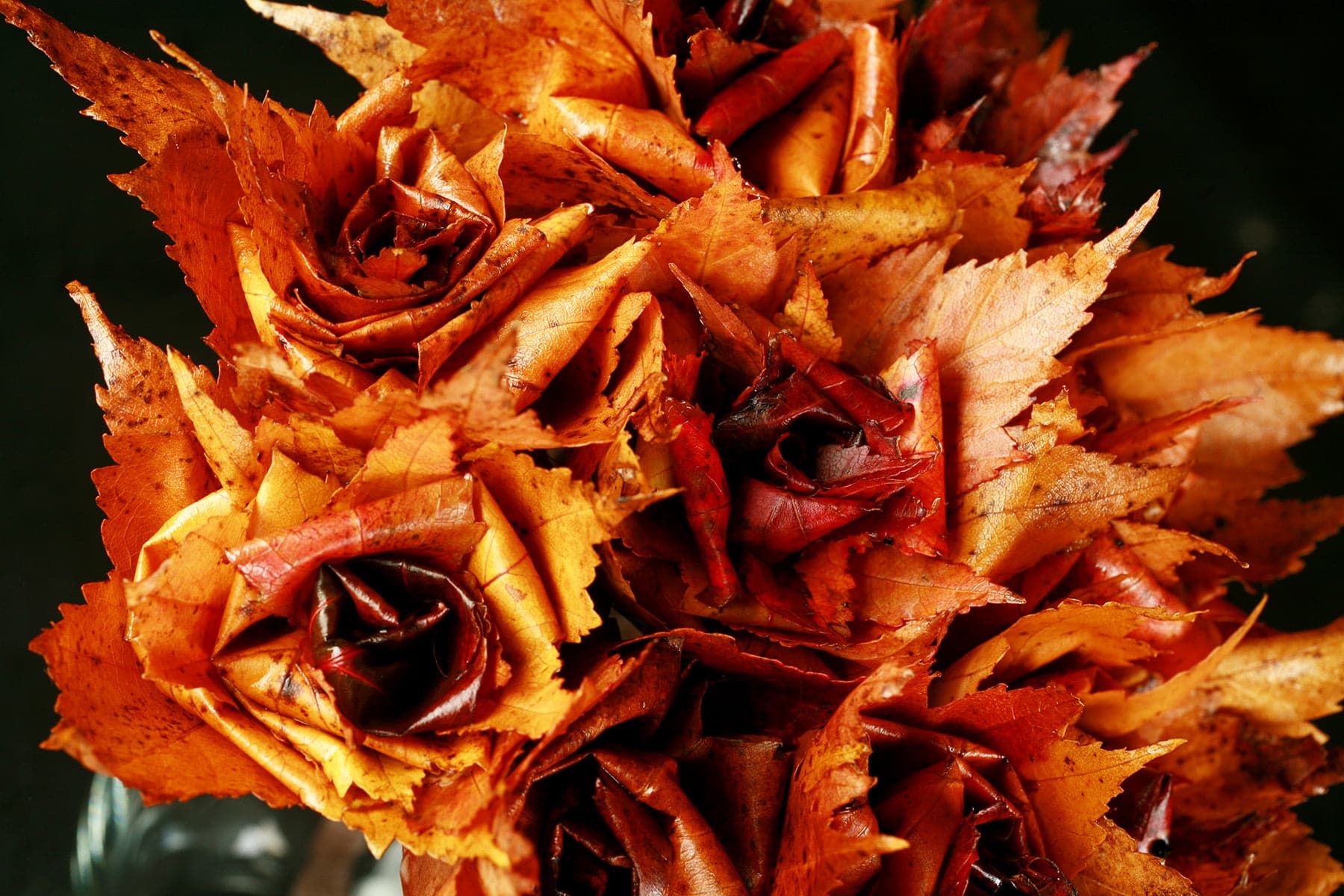
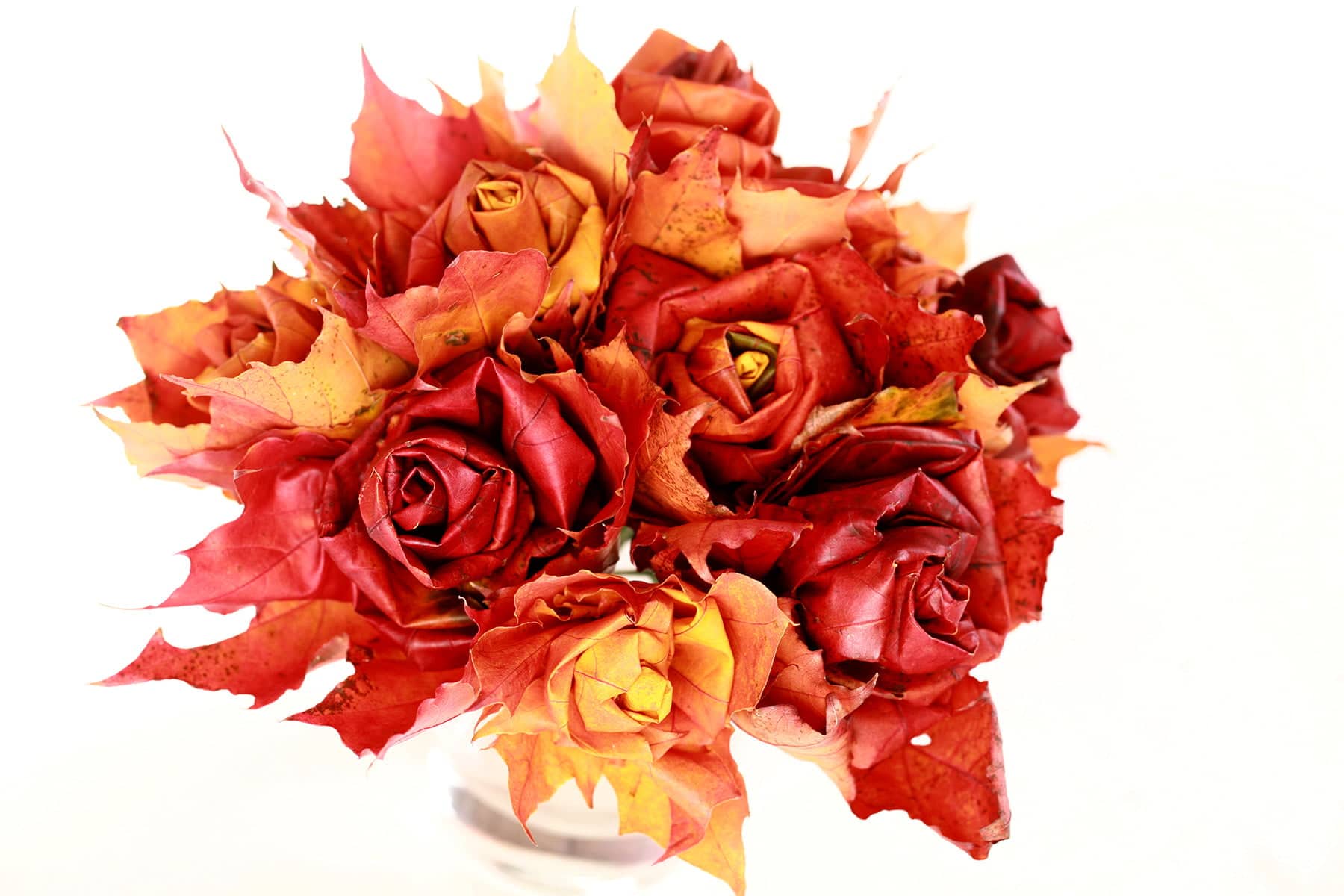
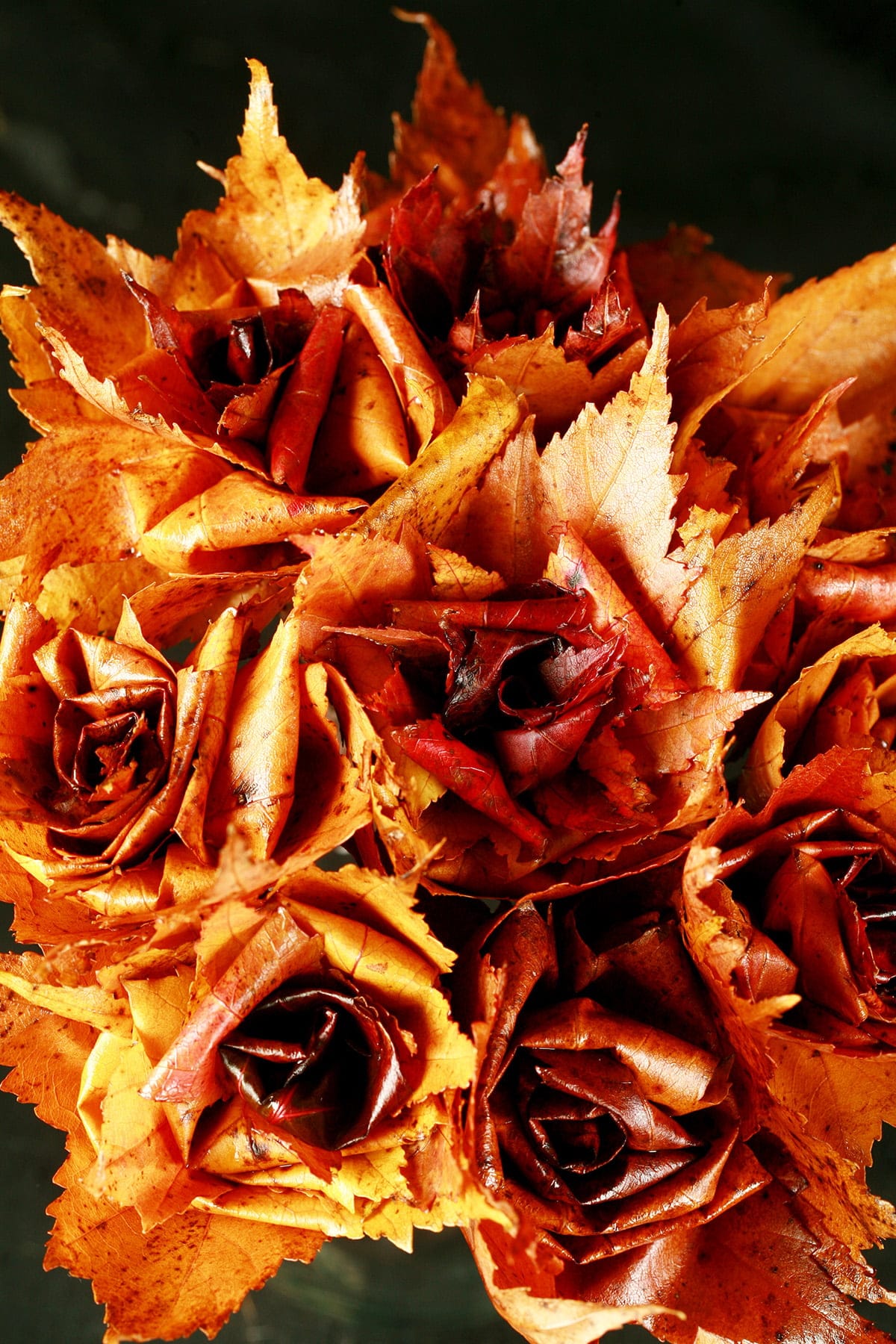






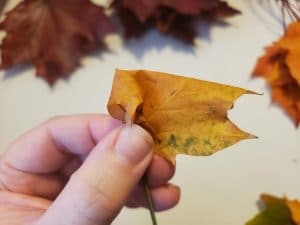











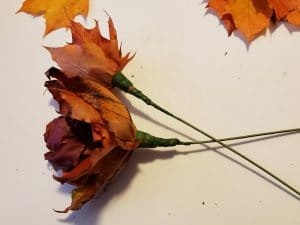










Leave a Reply